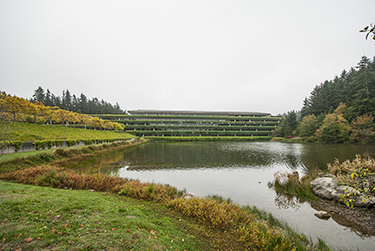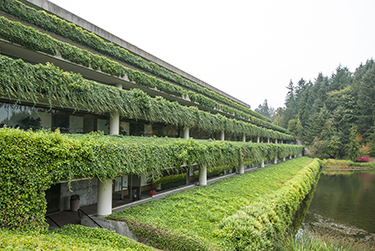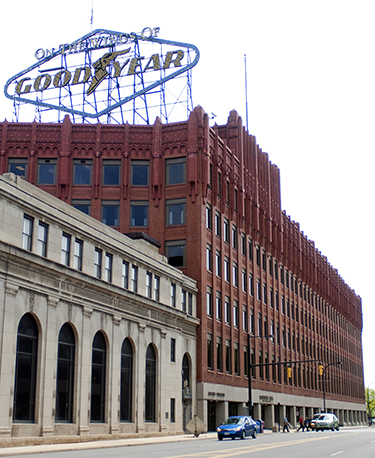|
Subscribe / Renew |
|
|
Contact Us |
|
| ► Subscribe to our Free Weekly Newsletter | |
| home | Welcome, sign in or click here to subscribe. | login |
Real Estate
| |
 |
February 23, 2017
IRG keeps the polish on former Weyerhaeuser gem
Industrial Realty Group

Messmer
|
Over the past several years, the Puget Sound region has become one of the most competitive real estate markets in the country. Prices for land continue to rise, and seemingly not a week goes by without an announcement of a new office tower or mixed-use community being built for fast-growing companies.
Major employers like Amazon, REI, Twitter and Expedia, to name just a few, are expanding rapidly in today’s economic boom. In the process, they’re taking huge chunks of space in Class A buildings rising out of the ground in our downtown cores and burgeoning submarkets.
And while it’s these ground-up projects that generate much of the excitement among economists, government leaders and industry stakeholders, many developers are pursuing other, creative ways to meet demand for corporate expansions.
They’re executing an age-old practice of reusing a site or building that no longer meets its original purpose. Adaptive reuse, in all its forms, is the most sustainable kind of real estate development, simply because it negates the need for new land and prevents urban sprawl. In addition, adaptive reuse allows the existing building, while obsolete, to be effectively reborn without the need for the massive recycling — or, even worse, disposal — of thousands of tons of old building material.
In Seattle, there are many examples of downtown buildings being altered for new and exciting uses: the Federal Reserve and Maritime buildings just north of Pioneer Square; Macy’s store in the shopping district; and several former industrial sites in the South Lake Union neighborhood. They’re all undergoing extensive rehabilitations with the goal of attracting commercial tenants who want centrally located space with some Old World character and charm.
The Weyerhaeuser plan
But adaptive reuse doesn’t always have to entail a holistic change of uses — from office to retail, or industrial to office, for example. Sometimes, in the case of the former Weyerhaeuser headquarters in Federal Way, it’s more of an adaptive repositioning of an attractive asset.
When Industrial Realty Group purchased the building, along with the rest of the Weyerhaeuser campus, we recognized immediately that the five-story, 358,000-square-foot headquarters was not only an architectural work of art, but it also served as a centerpiece to something even harder to find — a 430-acre campus with manicured walking trails, trout-bearing lakes, untouched forestland, and the famous Pacific Bonsai Museum and Rhododendron Species Botanical Garden.
From the beginning, it was obvious to everyone at IRG that we would preserve this architectural icon.
The building had always been home to a single tenant, yet it was designed in such a way by internationally renowned Skidmore Owings & Merrill that we knew we would have the flexibility to reposition it to meet market demands.
Indeed, the architects never intended for the site to serve anyone but Weyerhaeuser. But The Greenline, the building’s new name and brand, is an architectural marvel attracting both national and international interest from companies considering a move to the Pacific Northwest.
Often referred to as a “skyscraper on its side,” it features large rectangular floor plates, 14-foot floor-to-floor heights with 10-foot ceilings, a continuous non-sash window-wall system, and diagonal column placement — all designed to promote natural daylighting and maximize internal visibility.
The Greenline also includes a large cafeteria, assembly areas with capacity to accommodate 600 people, executive space, lush gardens and several water features. Its ivy-covered terraces link, at both ends, to the natural landscape surrounding the structure to create a wholly organic transition between the built and natural environment.
The Greenline is an adaptive reuse project that immediately connected us with another award-winning architect, Seattle’s CollinsWoerman, which specializes in sustainable architecture, planning and design for commercial, residential, healthcare and other clients.
The firm’s practice leader for design, James Walker, is leading our collaborative efforts to help move The Greenline into the next chapter of its 46-year life. The objective, he says, is to leverage all the building’s existing attributes while creating a new interior environment that’s suitable for a wide range of Class A users.
“From a fundamental standpoint, the building is so intelligently put together, with no notable design flaws, that we’re taking a ‘less is more’ approach to this project,” says Walker, who, along with his company has gained an international reputation for adapting out-of-date buildings for numerous commercial and residential uses.
“Today’s Class A tenants want best-in-market infrastructure, amenities and systems so they, too, can stay competitive,” continued Walker. “So we’re working with IRG to upgrade the entire building to meet these modern-day corporate needs. This building is a masterpiece, however, and it’s always important to recognize these rare architectural assets in any adaptive reuse environment.”
The Greenline name acknowledges the architectural elements that can be seen throughout the exterior of the building, along with the foliage that covers each of its long, horizontal levels. It’s the latest in a long history of investments IRG has made in obsolete commercial and industrial buildings around the country, transforming them from single-use assets into thriving multi-tenant corporate campuses.
At the crux of IRG’s business model is the belief that green development begins with reuse, not recycling, and we’ve expressed this ethos through projects that other owners deemed too complex and challenging. As an owner and operator, we find adaptive reuse to be the most economically and environmentally viable approach to development as cities struggle with densification, traffic congestion and resource conservation.
Pfizer, Goodyear reuses
One of those projects is the former Pfizer corporate facility, just north of Manhattan, where IRG purchased approximately 2 million square feet of buildings on a 200-acre campus. We’re currently placing tenants into the existing, high-quality facilities and pursuing redevelopment opportunities for retail, office, industrial and other commercial users.
Pfizer still has a presence on the campus, including an approximate 1.2 million-square-foot initial lease back from IRG. But, like The Greenline, we’re retaining the historical value of the property and creating a new economic life in a highly sustainable way.
Another notable adaptive reuse project of an obsolete industrial property is Goodyear Tire and Rubber Co.’s approximately 400-acre, award-winning campus. After developing a new 642,000-square-foot world headquarters for the Akron, Ohio-based manufacturer, IRG has begun renovating several out-of-date nearby buildings to attract large-scale users seeking modern office space, housing, a theater and a full-service hotel.
The Goodyear project has not only been an economic boon to the surrounding community, but it has enabled Goodyear — and the extended Akron community — to retain jobs and gain international attention for its environmentally friendly, community-oriented approach to urban redevelopment.
As cities continue to balance the increasing needs of corporate users with sound and sustainable urban-growth strategies, they’re looking to real estate companies with deep experience in adaptive reuse development. But not all projects are created the same. Sometimes, as in the case of The Greenline in Federal Way, it’s best to leave most elements of the building alone, especially when the original exterior architecture, and much of its interior, is fully functional.
By implementing thoughtful and environmentally sensitive programming, while updating amenities, systems and other infrastructure, owners and their architects can achieve their multi-use goals while preserving what’s best about the outdated buildings.
Tom Messmer is vice president of special projects at Industrial Realty Group, a privately held real estate development and investment firm. Messmer oversees renovation, preservation and leasing activities at The Greenline.
Other Stories:
- Retailers, shippers push demand for industrial space
- Seattle area office market riding a strong tailwind
- Endless job growth fuels robust multifamily market
- Runstad Center molds tomorrow’s real estate leaders
- Mid-rise apartments go upscale to take on high-rises
- Survey: Vulcan Inc.
- Survey: Bosa Development
- Seattle real estate market faces 3 big risks
- Transferable development rights: Where’s the incentive?
- Preserving a neighborhood’s roots with thoughtful design
- Sleepless nights for hotel investing?
- Survey: Beacon Development Group
- Survey: Wright Runstad and Co.
- Survey: Seattle Housing Authority
- Survey: Skanska USA Commercial Development





